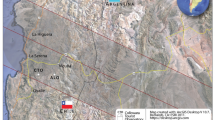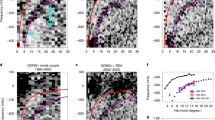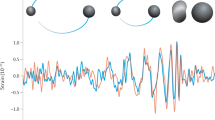Abstract
RECENTLY Woodward and Yourgrau1 put forward the hypothesis that the influence of gravitation on the propagation of electromagnetic waves depends on the frequency of the radiation. Their starting point is that the light deflexion by the Sun's gravitational field, as found from optical determinations at solar eclipses, appears somewhat larger2,3 than the value predicted by Einstein's theory of gravitation. Lately Muhleman et al.4 and Seielstad et al.5 succeeded in measuring the light deflexion by the Sun at 2.388 GHz and 9.602 GHz. Their results (1.82″ ± 0.2″ and 1.77″ ± 0.2 ″) are in close agreement with the predictions of general relativity. The uncertainty introduced by our limited knowledge of the coronal plasma amounts to about 10 per cent of the relativistic light deflexion4, which, being sufficient to prevent a decision between Einstein's theory and the Brans-Dicke theory, is not enough to make these measurements compatible with the predictions of Woodward and Yourgrau. Their hypothesis (according to formula (2), or (1) and (3))1 gives at 2.388 GHz and 9.602 GHz the tremendous values of 15′ 39″ and 7′ 45″ respectively for the light deflexion (that is, more than 500 times and 200 times the experimental results).
This is a preview of subscription content, access via your institution
Access options
Subscribe to this journal
Receive 51 print issues and online access
$199.00 per year
only $3.90 per issue
Buy this article
- Purchase on SpringerLink
- Instant access to full article PDF
Prices may be subject to local taxes which are calculated during checkout
Similar content being viewed by others
References
Woodward, J. F., and Yourgrau, W., Nature, 226, 619 (1970).
Mikhailov, A. A., Mon. Not. Roy. Astron. Soc., 119, 593 (1959).
Klüber, H. von, Vistas in Astronomy, 3, 47 (New York, 1960).
Muhleman, D. O., Ekers, R. D., and Fomalat, E. B., Phys. Rev. Lett., 24, 1377 (1970).
Seielstad, G. A., Sramek, R. A., and Weiler, K. W., Phys. Rev. Lett., 24, 1373 (1970).
Sadeh, D., Knowles, S., and Yaplee, B. S., Science, 159, 307 (1968).
Sadeh, D., Knowles, S., and Au, B., Science, 161, 567 (1968).
Shapiro, I. I., Pettengill, G. H., Ash, M. E., Stone, M. L., Smith, W. B., Ingalls, R. P., and Brockelman, R. A., Phys. Rev. Lett., 20, 1265 (1968).
Shapiro, I. I., ESRO Summer School (Interlaken, 1969).
Anderson, J. D., Muhleman, D. O., and Martin, W., Proc. Thirteenth COSPAR Plenary Meeting (Leningrad, 1970).
Author information
Authors and Affiliations
Rights and permissions
About this article
Cite this article
REINHARDT, M. A Paradox in the Interaction of the Gravitational and Electromagnetic Fields ?. Nature 229, 36 (1971). https://doi.org/10.1038/229036a0
Received:
Issue date:
DOI: https://doi.org/10.1038/229036a0
This article is cited by
-
Further evidence for an anomalous interaction between the electromagnetic and gravitational fields
Il Nuovo Cimento B Series 11 (1972)
-
Interaction of Gravitational and Electromagnetic Fields or Another Effect ?
Nature (1971)



